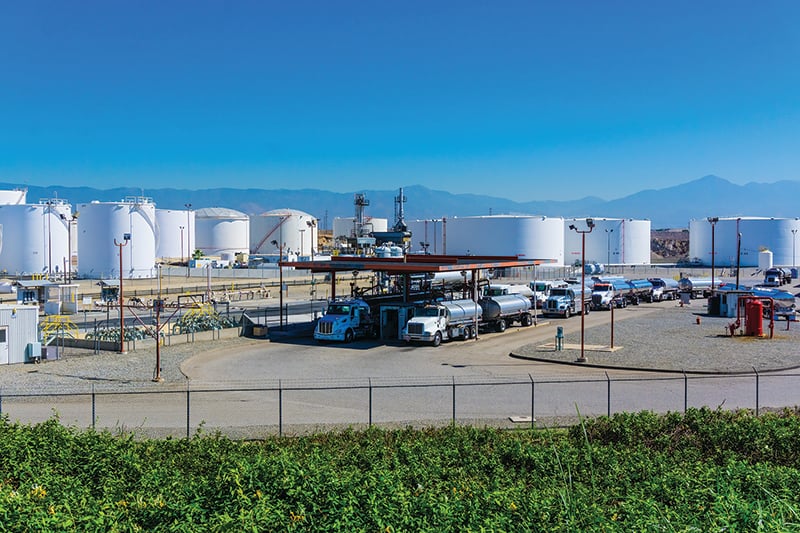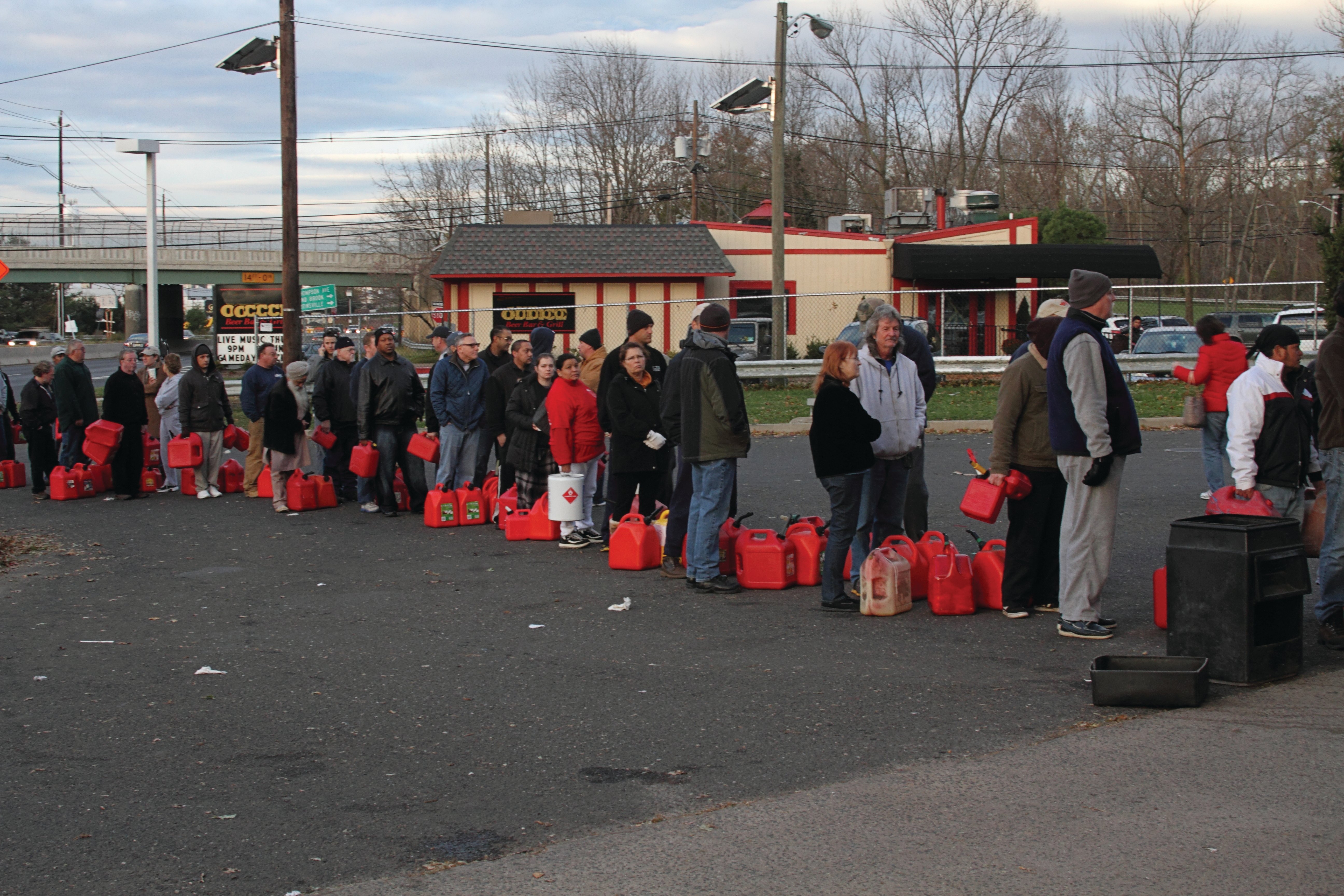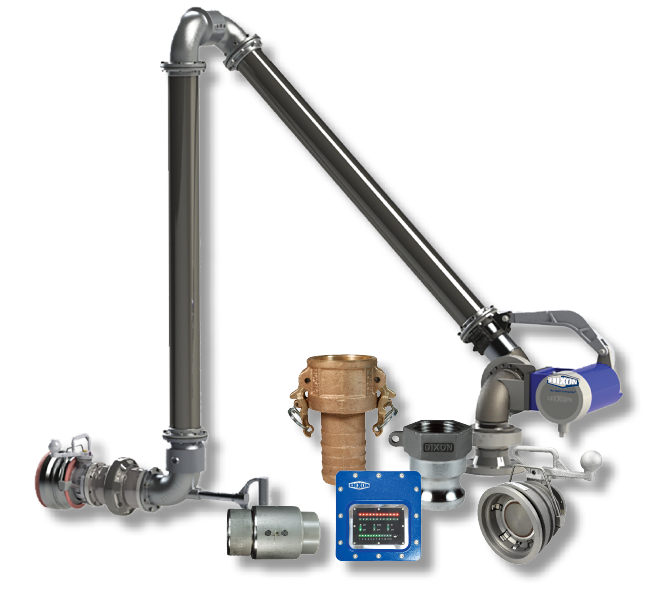Blog Post
The Future State of Energy Infrastructure
Feb. 17, 2021

Is history repeating itself? Just as the horse was slowly replaced by the automobile, is the gasoline automobile slowly being replaced by the electric vehicle? Whether the electric vehicle will ever directly replace the gasoline automobile or not is debatable, but along with renewable fuels, electric vehicles will undoubtedly dilute the demand for gasoline over time as fewer and fewer gasoline-fueled automobiles are on the road.
"The reports of my death are greatly exaggerated". - Mark TwainJust as Mark Twain quipped in 1897 from London when his obituary was mistakenly published in the United States, the conventional gasoline-fueled automobile is far from its death bed though. Over the past decades, commodities traders, environmentalists, politicians, and the media have all hypothesized that the United States’ seemingly insatiable thirst for oil had peaked and would start to decline substantially over the coming years as oil-replacing technologies became commercially feasible. Each year that analysts predicted oil was dead, Americans surprised them by driving more and consuming more and more gasoline.
Most of the world’s population has become very familiar with gasoline automobiles. Cars are relatively inexpensive to operate and maintain, and gasoline has assuredly become as ubiquitous as hay. By comparison, though, technologies that would replace gasoline automobiles, such as electric vehicles, are still in the relative infancy of development. Electric vehicles use batteries as a source of power. Even though battery technology is evolving quickly, electric vehicles that are comfortable and have good highway driving ranges continue to be novelties for the wealthy, but not practical transportation for the masses.
The transition from the horse-drawn carriage to the automobile took over 50 years. Likewise, it may be decades from today before the gasoline-powered automobile is completely pushed off the road.
The Future State of Energy InfrastructureAs electric vehicles become more common on the road, it stands to reason that the demand for petroleum-based energy products will decline. What will happen to the infrastructure that is in place to produce, refine, store, and transport petroleum products? As you read this article, petroleum exploration companies are filing for bankruptcy protection, oil and gas wells are being shut in, and decades-old refineries are being permanently shut down. In the fall of 2020, the oil industry continues to experience one of its worst-ever busts.
Energy infrastructure will need to adapt to the realities of the new marketplace. The transition to new market conditions will continue downstream from the oil fields and refineries to the gasoline bulk storage terminals and gasoline stations.
 Photo courtesy of iStock/Ron and Patty Thomas
Photo courtesy of iStock/Ron and Patty Thomas
Fuel tanker trucks at a refinery fueling station in California
Bulk storage terminals play a particularly important role in the process of filling up America’s gasoline tanks. Like giant liquid warehouses, storage terminals receive gasoline and other products by pipeline, rail, and vessel, then store these products in large aboveground tanks. To keep retail gasoline stations from running dry, tank trucks drive into special areas at the terminal called loading racks where flexible loading arms are extended to make a connection between the truck and the terminal’s tanks. In most storage terminals, loading and inventory are controlled by a sophisticated network of computers. The majority of storage terminals do not own their inventory – their customers do. Terminal operators make money by storing their customers’ inventory until it is needed and then loading it into delivery trucks. If for some reason terminal customers cannot access the inventory that they own – for example, if the terminal loading equipment is not operating correctly and trucks can’t load – a serious financial problem can arise, especially if gasoline stations run dry.
Gasoline tank truck drivers can tell you that some terminals are better at loading trucks than others. To meet the expectations of their customers in an increasingly competitive environment, gasoline storage terminals will need to become more dependable. Gasoline suppliers and retail operators must keep enough product on hand to meet ever-changing swings in demand due to weather and other factors. Truck fleets, too, have considerable pressure placed upon them to keep stations supplied while ensuring that truck drivers do not exceed their allowed hours of service.
It’s far from easy to operate gasoline stations and tank truck fleets profitably in this complex environment. It shouldn’t be surprising that terminal customers and their truck fleet operators are looking to motivate terminal companies to be both cost-competitive and dependable. Though they might use different terminology, they all are looking for gasoline terminals to be efficient, reliable, and resilient.
Operating a Bulk Storage Terminal in the FutureUnfortunately, in the past, terminal prices and reliability were at opposite ends of the spectrum – it was difficult to achieve both states simultaneously. This was primarily because of competition for finite gasoline demand between many terminals in a given market geography. Cut-throat pricing won the business, but it also put pressure on terminal margins and cash flow. Restricted cash flow in turn caused some critical equipment to be “run to failure”. Running equipment to failure means that there are times when the terminal has a reduced loading rate, or cannot load at all because an important component has failed and must be taken out of service.
Today, most terminal operators are struggling to meet their customers’ expectations for reliability and competitive pricing. As demand for petroleum products slowly declines over the coming decades, the retail market will require fewer and fewer terminals to meet their needs for gasoline and other traditional petroleum products. Terminals will battle for the remaining business, and many existing terminals will be sold or closed.
Like any other marketplace in America, competitive pricing plays an important role in who makes the cut and who doesn’t – but pricing is just one part of the equation. Over the last decade, terminal customers have become increasingly interested in storing their inventory in terminals that are safe, efficient, and well maintained. These preferences are driven down to terminal operators through written contracts with requirements for fast loading rates, short waiting times, and good safety and environmental records.
Contract requirements communicate the desired future state where terminals are operated safely, efficiently, and reliably. To achieve this state, the equipment necessary for loading operations must not be allowed to fail in service. This can often be achieved through built-in redundancy, but it can also be achieved by selecting reliable components. Programmable logic controllers (PLCs), pumps, motors, valve actuators, loading arm swivels, and tank truck couplers are examples of items that are absolutely necessary for terminal functionality, but which can unexpectedly fail in service – even when maintained according to their manufacturer’s instructions.
Reliability and SafetyAvoiding unexpected component failures is good for business because terminal customers can load their inventory when they want to, but reliability is good for terminal employees too. Terminal employees often perform dangerous repairs under less than ideal conditions. Catastrophic equipment failures never seem to occur on a Tuesday afternoon shift – it is more often the case that broken equipment needs to be repaired during a cold, dark Saturday night call out. A terminal with reliable components has fewer callouts because there are fewer in-service equipment failures. Because maintenance is performed under the best possible conditions, workers are exposed to fewer hazards.
ResilienceA terminal must operate reliably to win the battle for a customer’s business, but a terminal must be flexible to keep the customer happy under all conditions. Resilience represents an ability to return to full operation as quickly as possible after a business disruption, such as a storm or earthquake. This adaptability usually derives from good disaster planning, but there’s more to it than that. In the same sense that a terminal can be more reliable because their equipment doesn’t fail unexpectedly, so too a terminal can be more resilient if it can restore electrical power and replace damaged equipment quickly, allowing normal business operations to resume.
Typically, storage terminals cluster together around pipeline junctions, railheads, and deep-water ports near high volume gasoline markets. Because terminals are collocated, the cites that they serve are vulnerable to supply disruptions should a disaster simultaneously damage all of the terminals. Such was the case in 2012 when Superstorm Sandy devastated the metro New York City gasoline terminals located in northern New Jersey. Because the terminals were either damaged or had no electrical power, trucks could not load and gasoline could not be delivered to retail gasoline stations. The problems persisted for weeks, causing gasoline shortages throughout New Jersey and New York.
 Photo courtesy of iStock/Steve Byland
Photo courtesy of iStock/Steve Byland
Gas lines in New Jersey after Hurricane Sandy
To avoid this, terminal companies have identified the need for comprehensive disaster planning. These plans consist of repair and recovery procedures, contact information for utility company representatives, portable backup power generators, and suppliers who can expedite delivery of critical components that might be damaged by wind and water such as PLC controllers, pumps, motors, valve actuators, and loading rack components like loading controllers, overfill/ground monitors, swivels, and loading arms. The most resilient terminals have the best plans for recovery and have invested significant time, effort, and money to be sure that the resources they’ve identified are available when needed.
Terminal Operators Should Prepare for the FutureGasoline terminals with a proven track record for reliability and resilience will be the gold standard for terminals in the future. Terminal equipment like Dixon’s loading arms, rack overfill monitors, swivel joints, API couplers, and cam and groove fittings are designed and tested to help our customers operate safe, efficient, and reliable terminal facilities.

Along with supplying some of the most dependable fuel loading equipment available, Dixon’s inventory provides terminal operators the ability to adjust to rapidly changing conditions. Whether a terminal is damaged due to severe weather or must be reconfigured due to the changing needs of the marketplace, our vast inventory of fuel loading equipment and repair parts are readily available for rapid deployment.
This blog post was excerpted from the Terminal of the Future whitepaper.
If you would like to speak with a specialist about your application or questions email [email protected]
Sources:
- https://www.fhwa.dot.gov/ohim/summary95/
- https://hedgescompany.com/automotive-market-research-statistics/
- auto-mailing-lists-and-marketing/
- http://nautil.us/issue/7/waste/did-cars-save-our-cities-from-horses
- https://www.eia.gov/energyexplained/gasoline/history-of-gasoline.php
- https://www.eia.gov/dnav/pet/pet_pnp_cap1_dcu_nus_a.htm
- https://web.archive.org/web/20150611163521/http://www.nacsonline.com/YourBusiness/FuelsReports/GasPrices_2011/Pages/100PlusYearsGasolineRetailing.aspx
- https://uh.edu/engines//epi975.htm
- https://www.irs.gov/pub/irs-utl/tcn_db.pdf
- https://www.eia.gov/tools/faqs/faq.php?id=709&t=6
- https://www.loc.gov/everyday-mysteries/item/who-invented-the-automobile/
- https://www.nytimes.com/2015/01/13/business/energy-environment/oil-prices.html
- https://www.eia.gov/energyexplained/oil-and-petroleum-products/prices-and-outlook.php
- https://www.bloomberg.com/news/articles/2020-04-20/the-oil-price-crash-in-one-word-inelasticity
- https://www.bloomberg.com/news/articles/2020-03-09/shale-drillers-are-staring-down-the-barrel-of-worst-oil-bust-yet
- https://econlife.com/2020/07/oil-boom-and-bust-impact/
- https://www.macrotrends.net/2516/wti-crude-oil-prices-10-year-daily-chart
- https://www.eia.gov/dnav/pet/hist/LeafHandler.ashx?n=pet&s=emm_epm0_pte_nus_dpg&f=m
- https://history.state.gov/milestones/1969-1976/oil-embargo